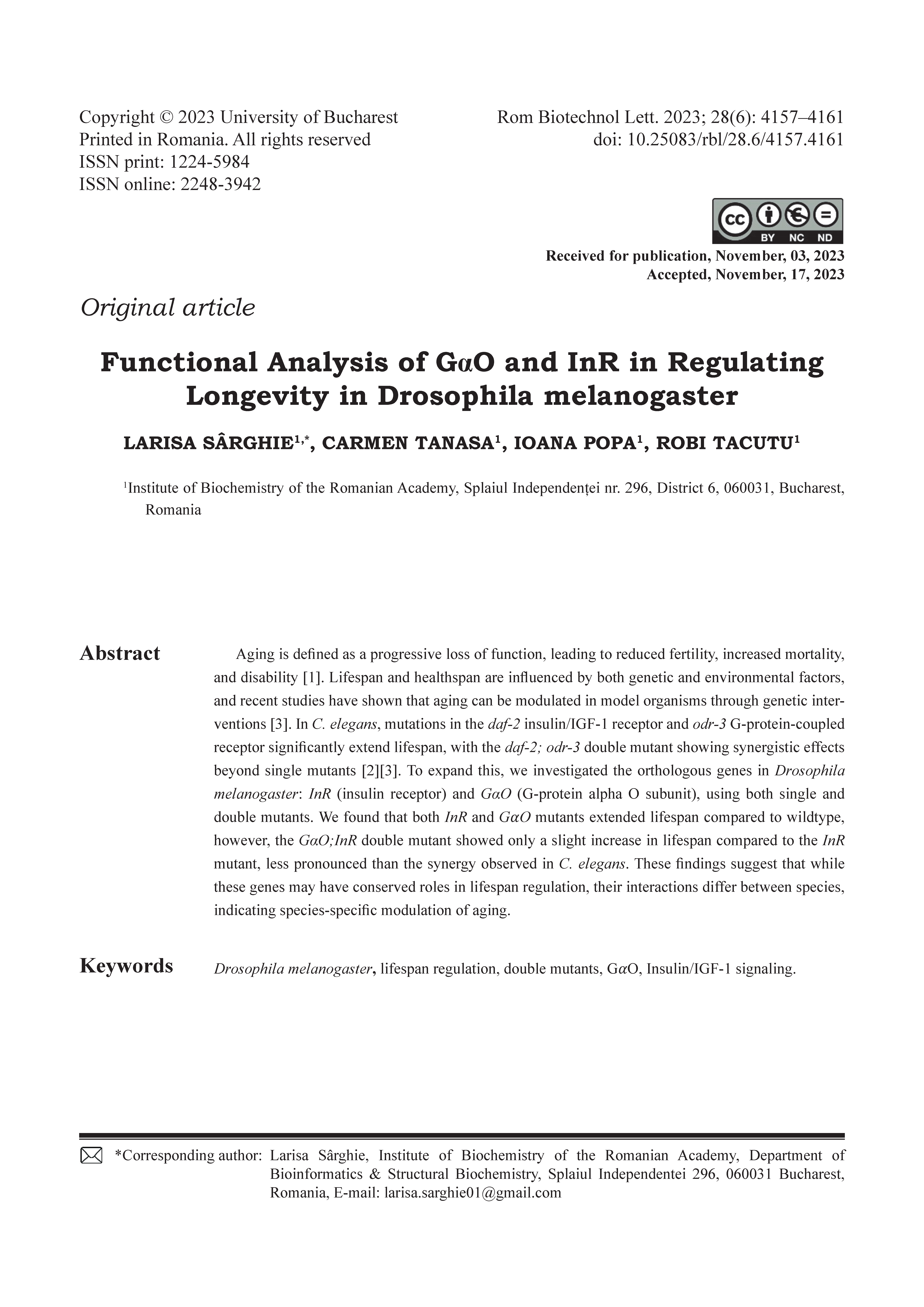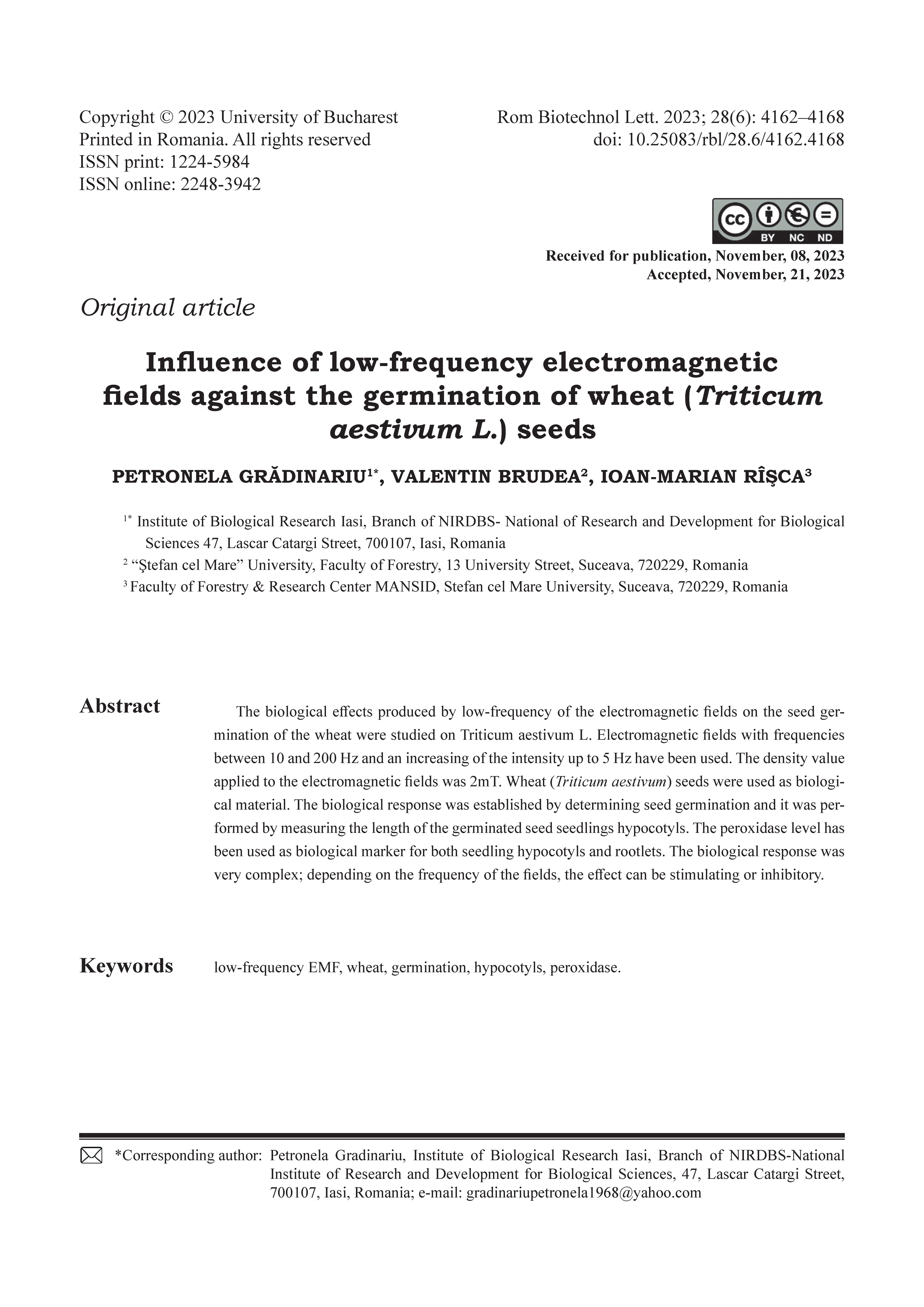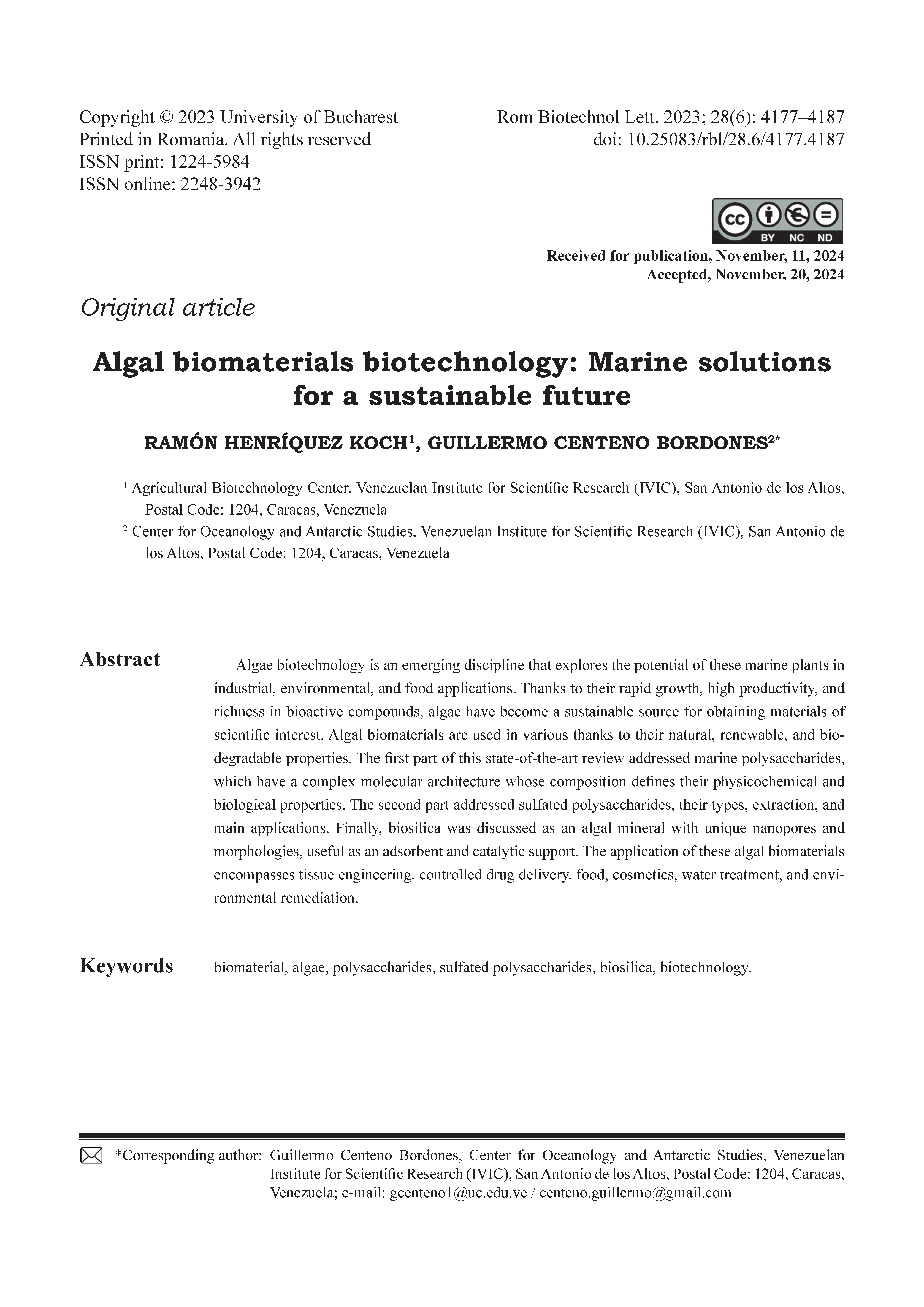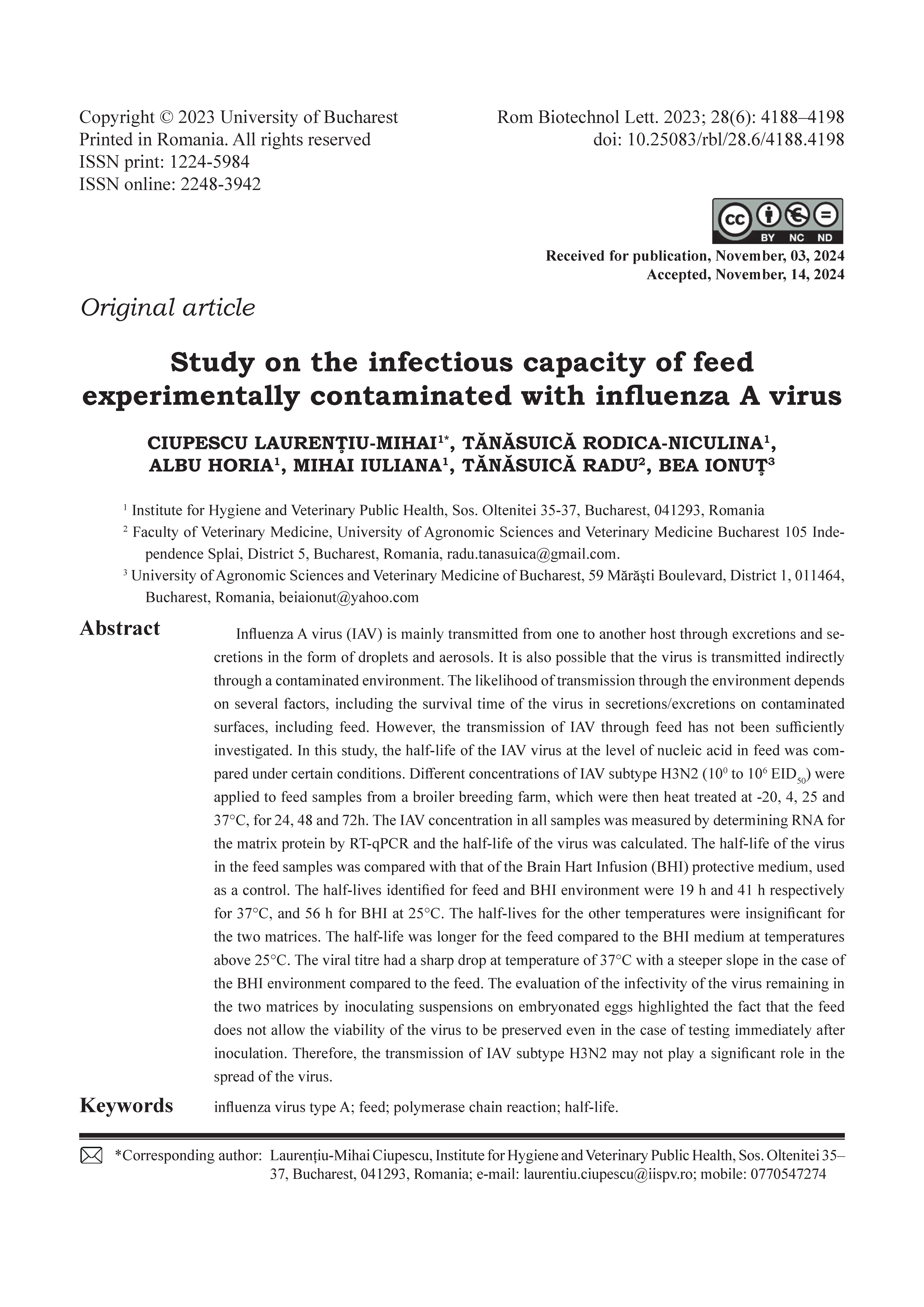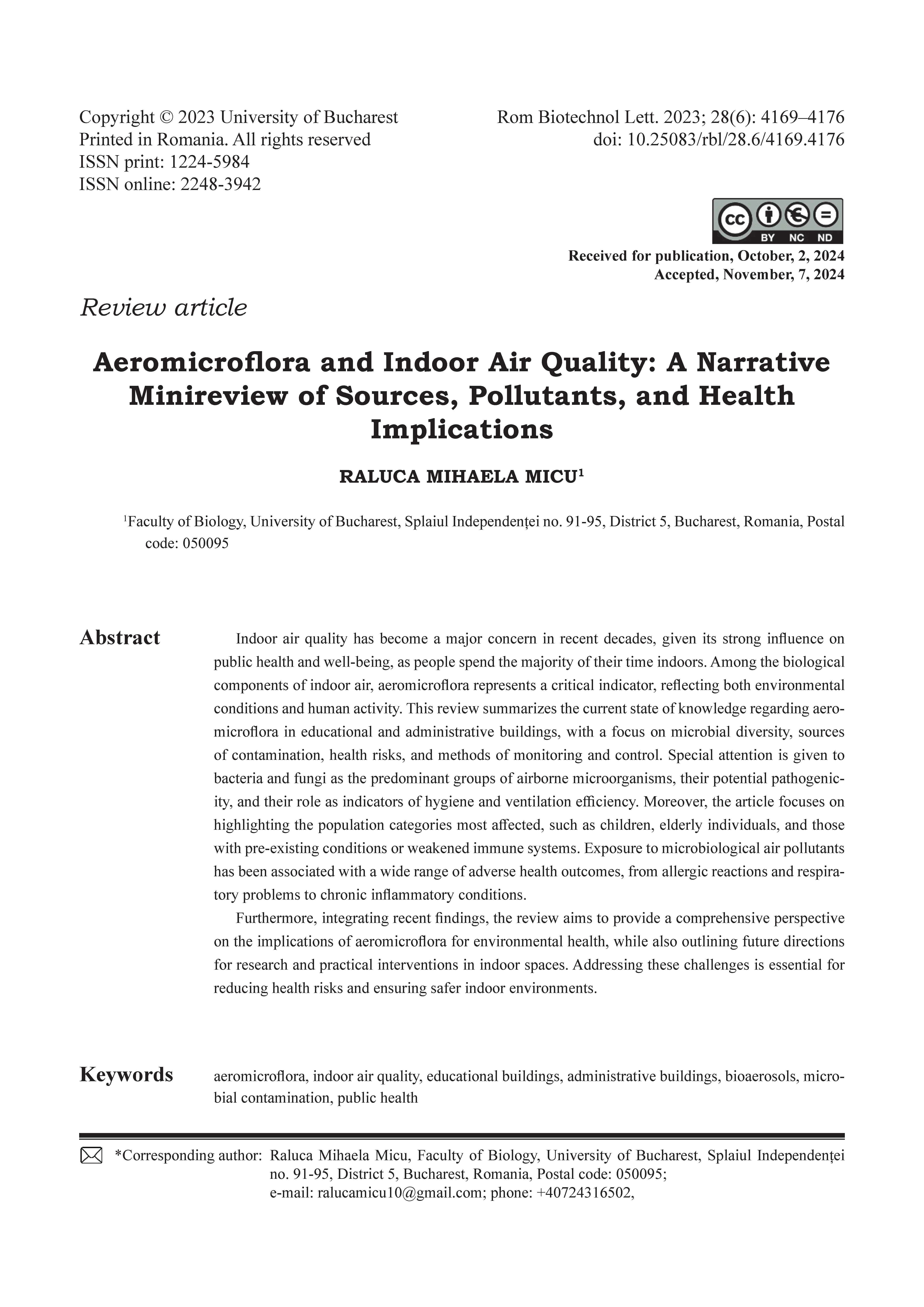About the Journal
The Romanian Biotechnological Letters journal (hereinafter RBL), published by the University of Bucharest was founded by Prof. IOAN I.F. DUMITRU and has now become one of the most important international scientific journals in the field of biotechnology and related disciplines published in Romania.
The Journal publishes original research articles, reviews and short communications. The main thematic areas of publications supported by RBL are: cellular and molecular biology, applied microbiology (microbial ecology, industrial microbiology, medical microbiology, immunology), functional genomics, metabolic engineering, physiology, ecology, nanotechnology, agriculture and farming improvement techniques, development of experimental methodology in medical, materials, life sciences and biotechnology.
The RBL editorial committee is formed by academic and research scientific personalities from Romania, Ireland, England, Germany, Turkey, Serbia, India, USA and Canada.
The RBL journal is included in the UEFISCDI (Executive Unit for Financing Higher Education, Research, Development and Innovation) list of the ISI - indexed Romanian journals on the basis of indexation in the Science Citation Index Expanded (SCI-EXPANDED), being also indexed in other major databases or regular periodicals of scientific information with an old tradition in the international scientific community.
Current Issue
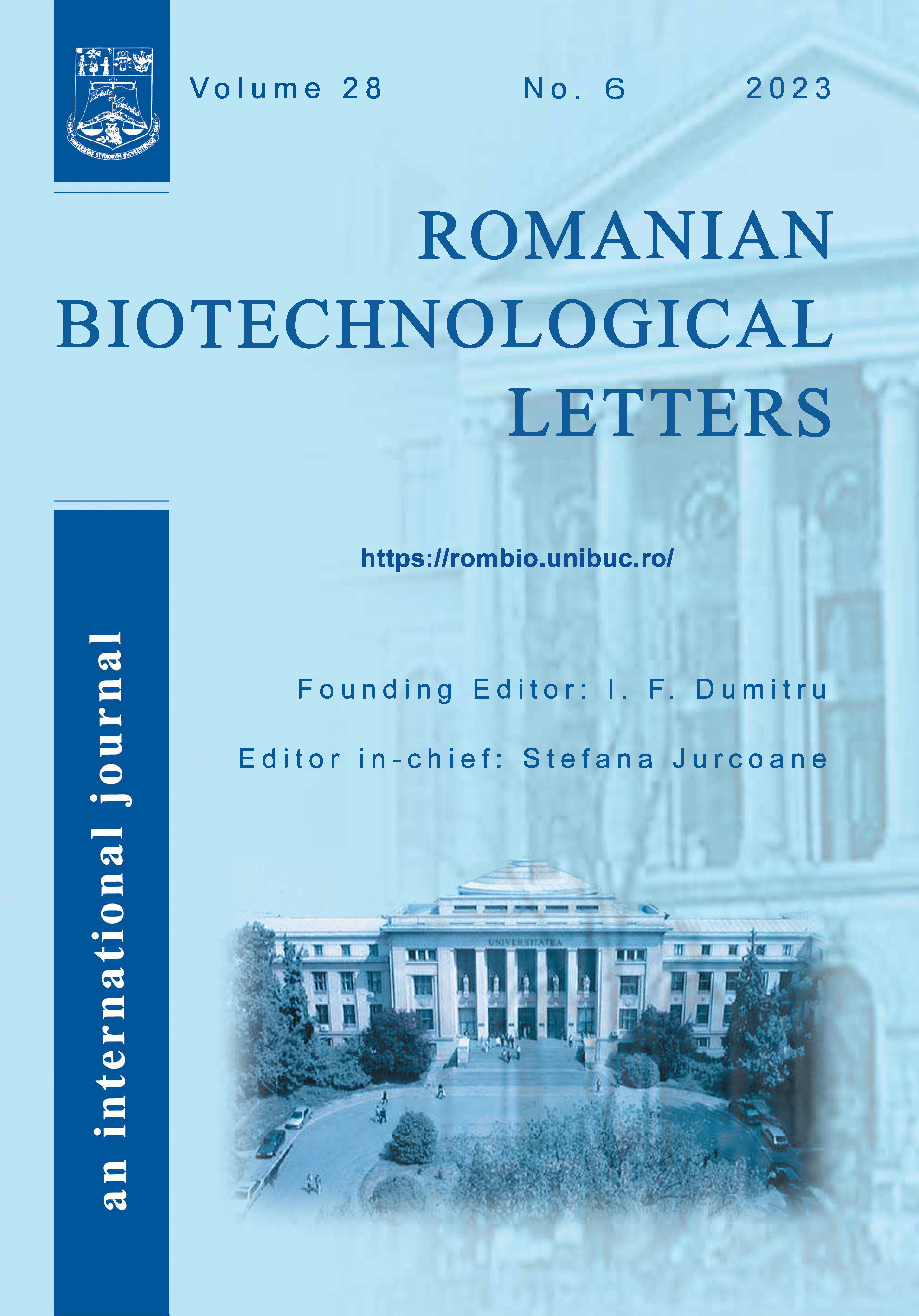
This journal is dedicated to publishing original research papers, reviews, rapid and short communications (not exceeding 3 printed pages). The covered topics and subjects include biotechnology (i.e., green, red, white, blue, bioinformatics) and interdisciplinary research in medicine, neuroscience, agriculture, animal husbandry, ecology and environmental protection.

